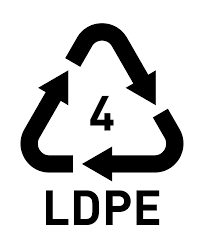Plastic is very common in daily life and can be said to be everywhere. Generally, there's a triangle symbol at the bottom of plastic products. This triangle symbol is a plastic recycling symbol, ranging from 1 to 7. Each number represents a different raw plastic material for manufacturing. Therefore, the use varies. That is to say, there are 7 types of plastic in terms of recycling. The following is a brief introduction to the meaning of the 7 types of plastics.
#1 Recycle number "01"-PET (polyethylene terephthalate)
Mineral water bottles and carbonated beverage bottles are made of this material. Beverage bottles cannot be recycled for hot water. This material is heat-resistant to 70°C and is only suitable for warm or frozen drinks. High-temperature liquids or heating are easy to deform, and substances harmful to the human body are dissolved.
#2 Recycle number "02"- HDPE (High Density Polyethylene)
Plastic containers for cleaning products, bath products, and plastic bags currently used in supermarkets and shopping malls are mostly made of this material, which can withstand a high temperature of 110 ℃, indicating that plastic bags for food can be used to hold food.
#3 Recycle number "03"- PVC (polyvinyl chloride)
PVC may be infamous for its harm. The toxic substances easily released by such plastic products mainly come from two sources. One is the single molecule vinyl chloride that has not been completely polymerized in the production process, and the other is the harmful substances in the plasticizer added. These two toxic substances are easily released in presence of high temperatures and fats, and cause cancer when entering the human body with food. At present, containers of PVC has been less used for food packaging. If it is in use, never let it heat up.
#4 Recycle number "04"- LDPE (low density polyethylene)
Packaging materials like plastic wrap, plastic film, etc. are all made of this plastic. It does not have strong heat resistance. Generally, the qualified PE cling film will incur a certain degree of hot melting when the temperature exceeds 110 ℃, leaving some plastic agents that the human body cannot decompose.
#5 Recycle number "05"- PP (polypropylene)
Microwaveable meal boxes are made of this material and are resistant to high temperatures of 130°C. PP is the only plastic box that can go in a microwave oven and can be reused after careful cleaning. When it comes to reusable food contact, PP is highly recommended.
But PP has its disadvantages, too:
- High thermal expansion coefficient which limits its high temperature applications.
- Susceptible to UV degradation
- Poor resistance to chlorinated solvents and aromatics.
- It is known to be difficult to paint as it has poor bonding properties.
#6 Recycle number "06"-PS (polystyrene)
This is the material used to make bowl-shaped instant noodle boxes and foamed snack boxes. It is both heat-resistant and cold-resistant, but cannot be placed in microwave ovens to avoid releasing chemicals under high temperature. Besides, it has high transparency and is relatively fragile.
#7 Recycle number "07"- PC and other categories
PC is a material that is widely used, especially for the manufacture of baby nursing bottles, water bottles, compact discs, etc. However, as it contains BPA (bisphenol A), it has been highly controversial. [BPA is a chemical that proves harmful to human health en environments. People with higher levels of exposure have an increased risk of cardiovascular disease, obesity and diabetes, according to some studies.] Experts pointed out that in theory, as long as bisphenol A is 100% converted into a plastic structure in the process of making, the product will be completely free of BPA, let alone releasing. However, if a small amount of BPA is not converted into a plastic structure of PC, it may be released and enter food or drink. Therefore, pay special attention when using this plastic container. After all, no one would risk his own health.








No comments:
Post a Comment